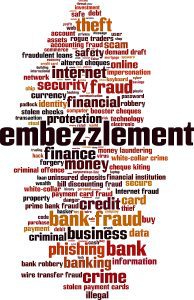Recently, the Defense Logistics Agency Disposition Service’s Office of Internal Review reviewed the report on fraud by the Association of Certified Fraud Examiners’ 2022 “Report to the Nations,” a comprehensive study of 2,110 cases across 133 countries.
The study gathered data about occupational fraud cases that companies investigated around the world from January 2020 through September 2021, with a focus on the methods used to commit fraudulent acts, how illicit acts were detected, the characteristics of perpetrators, and the overall impact on the company.
We have summarized the article below but encourage you to review the entire article so you can be better prepared to stop it in your organization. And we would like to highlight that background investigations are listed as important steps in detection and prevention.
The 2022 report estimates that the average organization loses 5% of its annual revenue to this crime each year.
Occupational fraud can be categorized into one of three buckets:
- Asset Misappropriation – stealing or misusing company assets.
- Corruption – using one’s position of power for personal gain, including bribery, conflicts of interest, and extortion.
- Financial Statements – intentional material misstatement in financial statements.
How Is it Committed and by Whom?
There are usually three factors present: Opportunity, Pressure, and Rationalization. The opportunity to commit fraud typically results from internal control failures, such as the lack of segregation of duties. Pressures to commit fraudulent acts often stem from financial hardships. Lastly, rationalization allows a perpetrator to convince himself or herself that what they did was okay.
Those with the ability to create and edit financial records have an opportunity to commit and conceal these acts, which speaks to the importance of segregation of duties along with effective detection methods.
Detection
Occupational fraud schemes last on average between 12-18 months prior to detection.
There are many types of detection tools, with the most common being tips (42% of cases), internal audits (16%), and management reviews (12%). Tips via hotlines continue to be an important anti-fraud mechanism and contribute to the quicker detection of fraudulent acts.
Eighty-five percent of fraudsters displayed at least one behavioral red flag which included, but are not limited to:
*Living beyond ones means (39% of cases)
*Financial difficulties (25% of cases)
*Unusually close association with vendor/customer (20% of cases)
Impact
ACFE estimates that organizations lose 5% of revenue to fraud every year, and total losses globally aggregate to over $3.6 billion. Consequently, the ability to quickly detect fraud is crucial. The top concealment methods used by fraudsters studied included:
- Creation of fraudulent physical documents (39% of cases)
- Alteration of physical documents (33% of cases)
- Creation of fraudulent electronic documents (28% of cases)
Those with the ability to create and edit financial records have an opportunity to commit and conceal fraudulent acts, which speaks to the importance of segregation of duties along with effective fraud detection methods. Anti-fraud tools that have been successful in detection and prevention of fraud cases include:
Detection Services
- Forensic analysis and investigation
- Internal corporate investigations
- Whistle-blower allegations
- Embezzlement
- Procurement fraud
- Money laundering
- Financial statement manipulation
- Any other type of occupational fraud
- Digital forensics and eDiscovery
- Estate and trust investigations
- Background investigations and lifestyle analyses
Prevention Services
- Internal control assessments and gap identification/improvements
- Risk assessments
- Vendor due diligence and background investigations
- Employee due diligence and background investigations
- Proactive transaction testing in high-risk areas/geography
- Fraud awareness training
- Data analytics
In conclusion, preventing fraud is a team effort.
James P. Randisi, President of Randisi & Associates, Inc., has since 1999 been helping employers protect their clients, workforce and reputation through implementation of employment screening and drug testing programs. This post does not constitute legal advice. Randisi & Associates, Inc. is not a law firm. Always contact competent employment legal counsel. To learn more about drug testing mistakes, Mr. Randisi can be contacted by phone at 410.494.0232 or Email: info@randisiandassociates.com or the website at randisiandassociates.com



